#ameircan south
Explore tagged Tumblr posts
Text
#history#teachertok#historytok#Ushistory#civilwar#americanhistory#historyteachers#tiktok fyp#tiktok#think piece#us politics#ameircan south#Race theory#american slavery
5 notes
·
View notes
Text
Central and south Ameircan students every 4 years during the World Cup or during Copa America :

This fucking thread about JK Rowling’s shit world building.
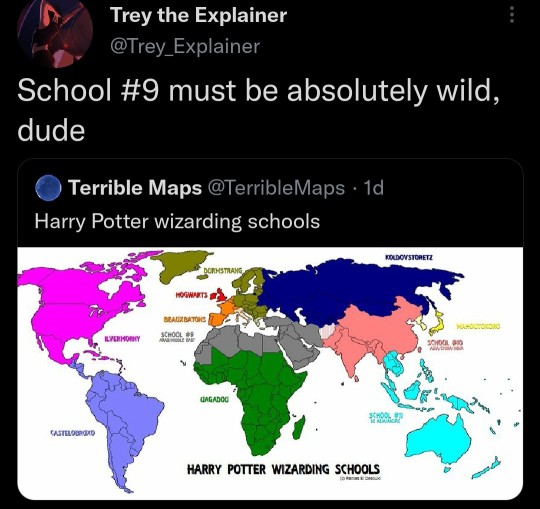
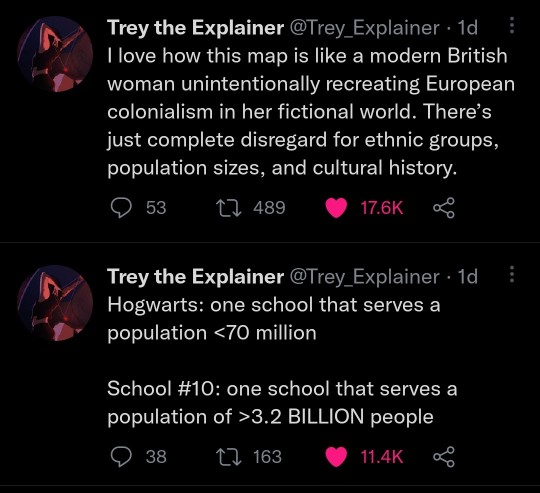


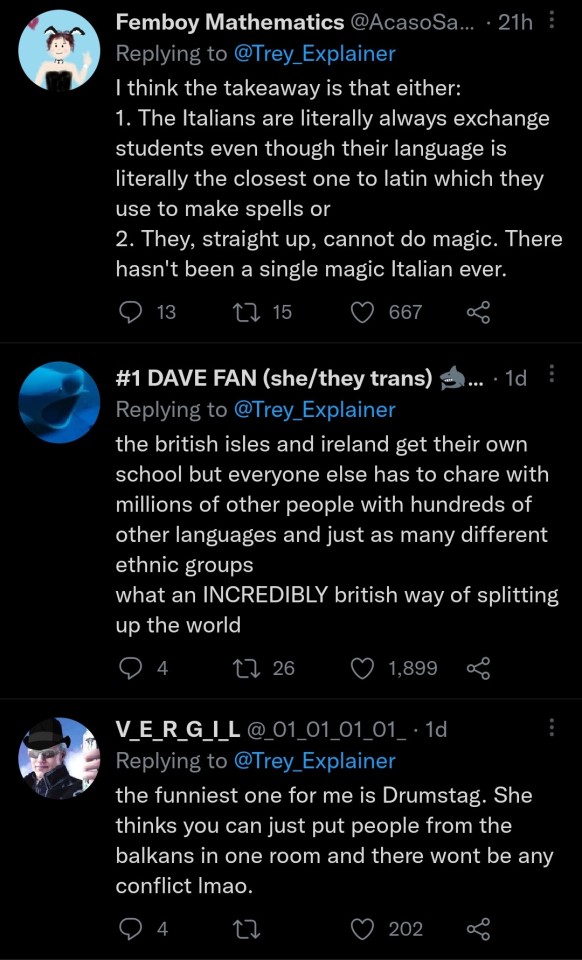
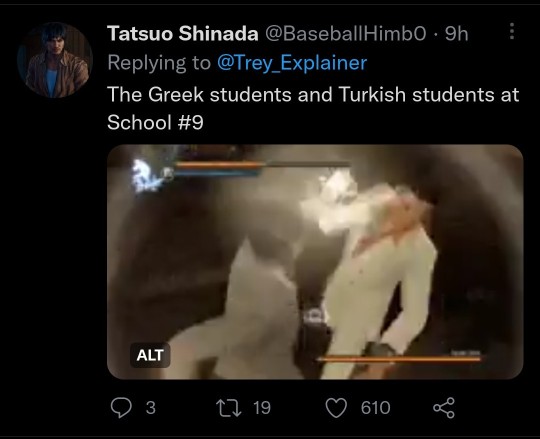



40K notes
·
View notes
Text
Glyptodontopelta mimus

By Jack Wood
Etymology: Shield of Glyptodon
First Described By: Ford, 2000
Classification: Dinosauromorpha, Dinosauriformes, Dracohors, Dinosauria, Ornithischia, Genasauria, Thyreophora, Eurypoda, Ankylosauria, Nodosauridae
Status: Extinct
Time and Place: About 68 million years ago, in the Maastrichtian of the Late Cretaceous

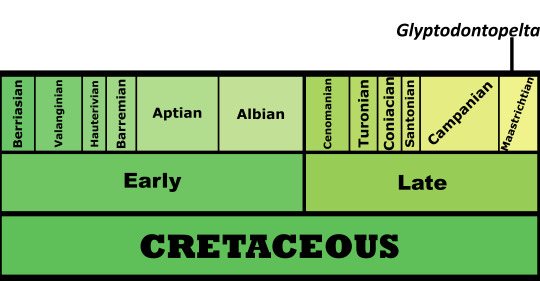
Glyptodontopelta is known from the Naashoibito Member of the Ojo Alamo Formation in New Mexico

Physical Description: Glyptodontopelta is not a particularly well-known ankylosaur, being only known from fragments of body armor. Like (most) other ankylosaurs, it would have probably been fairly squat and wide, not built for fast movement. Like other Nodosaurs, it would have had a flexible tail, with no tail club; and spikes on its shoulders. Its head would have been armored,a nd it would have had osteoderms (armor on the back grown directly from bone) all over its back. The osteoderms are fossilized, and what we know of them indicates they have furrows going away from the center of the body, and they featured pores and pits randomly spaced over its body.
Diet: Like other Ankylosaurs, Glyptodontopelta would have primarily fed upon low-growing foliage, as a low-level browser.
Behavior: Glyptodontopelta was actually quite common in its environment, and as such it possibly lived in social groups, meandering together across the plains for plants such as ferns and shrubs. The spikes on its shoulders - while sharp - would have been used for display to one another, with bigger spikes indicating a more “fit” individual. They may have crouched against the ground in an attempt to protect the softer parts of their bodies from predators, leaving only the armor on top exposed to danger. They also probably had more narrow mouths, to pick out very specific bits of foliage from the environment to eat; rather than a wider, more generalist mouth. They also would have found most of their food with an excellent sense of smell, and used long, flexible tongues to grab plants from hard to reach places. As a dinosaur, Glyptodontopelta would have taken care of its young - called Scutelings!
Ecosystem: The Naashoibito ecosystem is the last known environment from a notable series of environments in New Mexico from the Cretaceous; before it are things such as the Kirtland Formation and the Fruitland Formation. These showcase a familiar - but different - sort of Late Cretaceous North America than we are usually used to. While it features the usual hadrosaurs and ankylosaurs, it also has sauropods, and everything is quite distinct - an indication of the crossing over of South American and North Ameircan faunas, and the unique habitat present at the time. This environment is directly followed in the fossil record by a Cenozoic one - ending our look into this distinctive Late Cretaceous ecosystem turnover. This was a very sandy floodplain, frequently arid and with distinctive dry and wet seasons. This environment was very different from contemporary places like the Hell Creek which - while seasonal in a similar way - was significantly cooler in temperature. Here, Glyptodontopelta lived alongside dinosaurs such as the very large titanosaur Alamosaurus, hadrosaurs like Hypacrosaurus, ceratopsians like Ojoceratops and Torosaurus, the chickenparrot Ojoraptorsaurus, the raptor Richardoestesia, and possibly Tyrannosaurus rex, which would have been the main predator of Glyptodontopelta.
Other: Glyptodontopelta, being so poorly known, has been examined thoroughly to see if it counts as its own dinosaur; for now, the consensus says yes, primarily due to the differences in its armor.
~ By Meig Dickson
Sources under the Cut
Arbour, V. M, & P. J. Currie. 2015. Systematics, phylogeny and palaeobiogeography of the ankylosaurid dinosaurs. Journal of Systematic Palaeontology DOI: 10.1080/14772019.2015.1059985
Burns, Michael E. (2008). "Taxonomic utility of ankylosaur (Dinosauria, Ornithischia) osteoderms: Glyptodontopelta mimus Ford, 2000: a test case". Journal of Vertebrate Paleontology. 28 (4): 1102–1109.
Ford, T. L. 2000. A review of ankylosaur osteoderms from New Mexico and a preliminary review of ankylosaur armor. Dinosaurs of New Mexico. New Mexico Museum of Natural History and Science Bulletin 17:157-176
Fowler, D. W. 2017. Revised geochronology, correlation, and dinosaur stratigraphic ranges of the Santonian-Maastrichtian (Late Cretaceous) formations of the Western Interior of North America. PLoS ONE 12 (11): e0188426
Gilmore. 1919. Reptilian faunas of the Torrejon, Puerco, and underlying Upper Cretaceous formations of San Juan County, New Mexico. United States Geological Survey Professional Paper 119:1-68
Jasinski, S. E., R. M. Sullivan, and S. G. Lucas. 2011. Taxonomic composition of the Alamo Wash local fauna from the Upper Cretacoues Ojo Alamo Formation (Naashoibito Member), San Juan Basin, New Mexico. In R. M. Sullivan, S. G. Lucas, & J. A. Spielmann (eds.), Fossil Record 3. New Mexico Museum of Natural History and Science Bulletin 53:216-271
Sullivan, R. M., and S. G. Lucas. 2010. A new chasmosaurine (Ceratopsidae, Dinosauria) from the Upper Cretaceous Ojo Alamo Formation (Naashoibito Member), San Juan Basin, New Mexico. In M. J. Ryan, B. J. Chinnery-Allgeier, D. A. Eberth (eds.), New Perspectives on Horned Dinosaurs: The Royal Tyrrell Museum Ceratopsian Symposium. Indiana University Press, Bloomington 169-180
Sullivan, R. M., S. E. Jasinski, M. Guenther and S. G. Lucas. 2011. The first lambeosaurin (Dinosauria, Hadrosauridae, Lambeosaurinae) from the Upper Cretaceous Ojo Alamo Formation (Naashoibito Member), San Juan Basin, New Mexico. In R. M. Sullivan, S. G. Lucas and J. A. Spielmann (eds.), Fossil Record 3. New Mexico Museum of Natural History and Science Bulletin 405-417
Sullivan, R. M., S. E. Jasinski, and M. P. A. Van Tomme. 2011. A new caenagnathid Ojoraptorsaurus boerei, n. gen., n. sp. (Dinosauria, Oviraptorosauria), from the Upper Cretaceous Ojo Alamo Formation (Naashoibito Member), San Juan Basin, New Mexico. In R. M. Sullivan, S. G. Lucas & J. A. Spielmann (eds.), Fossil Record 3. New Mexico Museum of Natural History and Science Bulletin 418-428
Vickaryous, Matthew K.; Maryańska, Teresa; Weishampel, David B. (2004). "Ankylosauria". In Weishampel, David B.; Dodson, Peter; Osmólska, Halszka (eds.). The Dinosauria (Second ed.). Berkeley: University of California Press. pp. 363–392.
#Glyptodontopelta mimus#Glyptodontopelta#Dinosaur#Ankylosaur#Nodosaurid#Dinosaurs#Prehistoric Life#Palaeoblr#Paleontology#Prehistory#Factfile#Herbivore#North America#Cretaceous#Mesozoic Monday#biology#a dinosaur a day#a-dinosaur-a-day#dinosaur of the day#dinosaur-of-the-day#science#nature
94 notes
·
View notes
Photo

On This Day in History March 25, 1931: African Ameircan journalist, educator, suffragette, social reformer and civil rights activist Ida B. Wells-Barnett, née Ida Bell Wells, (July 16, 1862 - March 25, 1931) passed away in Chicago, Illinois.
Wells fought hard to bring to light the lynching that was being perpetuated against blacks during the late 1800′s and early 1900′s through her writing and reporting. She also worked to help women gain the right to vote while often at loggerheads with white suffragettes. Her later life was marked with an attempt to enact urban reform in Chicago.
For Further Reading:
Ida B. Wells: Took on racism in the Deep South with powerful reporting on lynchings. by Caitlin Dickerson
Ida B. Wells-Barnett 1862-1931 by Arlisha R. Norwood, NWHM Fellow 2017 from the National Women’s History Museum website
When Ida B. Wells Took on Lynching, Threats Forced Her to Leave Memphis by Becky Little from History.com dated August 2, 2018
#Ida B. Wells#Ida B. Wells-Barnett#Women's History Month#Women's History#Women's Studies#HERStory#African American History#African American Studies#Black History#Black Studies#Civil Rights History#Women's Right to Vote#Women's Suffrage#Urban Reform#American History#U.S. History#On This Day in History#This Day in History#history today#Today in History#History#Historia#Histoire#HistorySisco
5 notes
·
View notes
Text
Skate America Preview
Entries/Results: http://www.isuresults.com/results/season1819/gpusa2018/
For information on how to watch, check out this post from a really great blog.
Skate America is the first competition in the Grand Prix of Figure Skating.
Before I get into the actual preview, here’s a summary of the withdrawals/replacements:
In the Men’s event, Jorik Hendrickx of Belgium withdrew and was replaced by Kevin Reynolds. In the Ladies event, Nicole Rajicova of Slovakia withdrew and was replaced by Alaine Chartrand of Canada. Elena Radionova of Russia withdrew, and will not be replaced.
In the pairs event, Yu Xiayou and Zhang Hao and Li Xiangning and Zhong Xie of China withdrew and were replaced by Minerva Fabienne Hass and Nolan Seegert of Germany and Evelyn Walsh and Trent Michaud of Canada. In Ice Dance, Yura Min and Alexander Gamelin of South Korea withdrew and were replaced by Robynne Tweedale and Joseph Buckland of Great Britain.
Now for the previews:
Men
The field is highlighted by Reigning World Champion Nathan Chen of the US. He looked less than stellar at the Japan Open, but even so, it’ll be hard for him to lose here unless something shocking happens. However, the other two positions are wide open and no one has really stood out that I’ve seen so far this season. There’s easily seven or eight skaters all capable of medalling here, honestly, so this should be a very interesting field. I would say my top picks are Morisi Kvitelashvilli of Georgia and Sergei Voronov of Russia at the moment, but anything could happen with this field.
Ladies
The ladies field does not have a clear victor, but I would say the gold will be between Bradie Tennell of the US and Satoko Miyahara of Japan. The bronze should be a fight between Kaori Sakamoto of Japan, Sofia Samurodorova of Russia, Leona Hendrickx of Belgium (who could factor in for gold as well) and Marin Honda of Japan. Polina Tsurkaya of Russia could be a factor, as well.
Pairs
The obvious gold medal winners are Evgenia Tarasova and Vladimir Morozov of Russia. The silver and bronze are less cut and dry, but I would say its between Ameircans Ashley Cain and Timothy LeDuc and Alexa Scimeca Knierim and Chris Knierim and Russians Alisa Efiomova and Alexander Korovin. They are your top four, just a matter of what order they’ll be in.
Ice Dance
I think the gold is going to be between Madison Hubbell and Zachary Donahue of the US and Charlene Guignard and Marco Fabbri of Italy. The battle for bronze should be between Lorraine McNamara and Quinn Carpenter of the US and Tiffany Zahorski and Jonathan Guerrero of Russia. Once agian, there’s your top four, just a matter of what order.
There’s so many good skaters, and it should be very exciting!
9 notes
·
View notes
Text

people attacking them but they right, and i see most of the replies and quotes saying the most evil man is out of office and ur a non ameircan in american business blah blah ok do they not realize that no matter whos in office countries especially the global south will always be affected by the presidents actions lmao the privilage is showing
0 notes
Link
via Politics – FiveThirtyEight
Welp, this is never fun. We discovered an issue with how our primary model was making state-by-state and district-by-district forecasts. Specifically, the model was not properly calculating the demographic regressions that we use as a complement to the polls.
The top-line effect of fixing the error was not very large — for instance, Sen. Bernie Sanders’s chances of getting a delegate majority fell by around 3 percentage points, while former Vice President Joe Biden’s fell by around 1.5 points. In fact, it mainly helped the chances that no one will get a majority of pledged delegates (those chances rose about 3.5 percentage points), at the expense of any one candidate’s chances of getting a majority. The one candidate who did benefit was former New York Mayor Michael Bloomberg, whose chances increased from 7 percent to 9 percent). However, the changes are more notable in some individual states.
This problem was introduced into the model’s code on Feb. 5 (just after the Iowa caucuses); these functions had been working properly before then. The error was fixed as of the forecast we published just after noon on Feb. 19.
Here’s a look at what went wrong and what changed:
First, what is a demographic regression? To infer a candidate’s standing in all 57 states and territories at any given time, our model calculates a series of demographic regressions based on (i) the results of states that have voted so far and (ii) the polls in states where we have abundant polling. For instance, the regressions can figure out that Biden is strong in states with a large African American populations, and that Sanders is strong in liberal states. These demographic regressions are then combined with a geographic prior based on candidates’ home states and regions (for example, Sanders is assumed to be strong in New England). The result is then used as a substitute for polling in states where there are no polls and as a complement to the polls in states where there isn’t much polling. Nevada and South Carolina, for instance, have a fair amount of polling but not as much as the model would like, so the regression gets a small amount of weight in our forecasts.
What was wrong with the regressions? Basically, the regressions weren’t calculating at all, so the model was just defaulting to the geographic prior. (If you want to get very technical, when programming in Stata, please remember that local macros aren’t stored in the program’s memory when you execute another do-file from within the shell of a master do-file.)
What problems was this causing? By just defaulting to the geographic prior rather than also using demographics, the state-by-state forecast distributions were too compressed, or underdispersed. In other words, they weren’t recognizing fairly obvious demographic strengths and weaknesses of each candidate.
While relying solely on the geographic prior isn’t a terrible approach, especially for candidates such as former South Bend, Indiana, Mayor Pete Buttigieg who are strong in their home regions, it doesn’t capture some of the variations elsewhere in the Democratic electorate. Let’s take the presence of African Ameircans and moderate white voters in the South as an example. Because these two demographic groups are so important in that region, Biden is stronger there and weaker elsewhere than you’d guess from geography alone. The same holds true, though to a lesser extent, for Bloomberg. Conversely, Sanders has more strength in the West than you’d guess based on geography alone, because Western electorates tend to be liberal and to have a high number of Hispanic voters, and Sanders does well with both of those voting blocs.
As a result, the model was, for instance, underrating Biden’s chances in states like South Carolina and Alabama and underrating Sanders’s chances in Nevada and California. Since the demographic regressions are phased out in states with a lot of polling, the effect was larger in states with less polling, like Colorado. On average, candidates’ projected vote shares changed by about 1 percentage point (e.g. shifted from 18 percentage points to 19 percentage points) as a result of the bug fix.
What was that about district-by-district forecasts? The model also uses the demographic regressions to forecast the results in individual districts. For instance, although Sen. Elizabeth Warren might not be strong in South Carolina overall, she could be poised to do fairly well in a South Carolina district with a lot of college-educated voters.
Without the demographic regression, though, the model defaulted toward using the statewide forecast in each district. It did still account for random variation between districts — so there might be simulations where, say, Warren got 12 percent of the vote in South Carolina but 17 percent in a particular district, thereby earning delegates there. (Democratic rules generally require that a candidate receives at least 15 percent of the vote to qualify for delegates in a state or district.)
Still, with the demographic regression not working properly, the model wasn’t accounting for enough district-by-district variation. As a result, it tended to underestimate the number of district delegates that a candidate would expect to earn when they finished with less than 15 percent of the vote statewide. This matters because about two-thirds of Democratic delegates are awarded by district rather than statewide. The ability of candidates to earn these district delegates makes it slightly harder for front-runners (e.g. Sanders) to accumulate runaway delegate margins, which in turn makes a “no majority” scenario more likely.
How can you prevent something like this from happening again? I don’t know. We’ve gotten our share of forecasts wrong and had models that, in retrospect, we wish we’d designed differently. But I usually have a good eye for when code changes or new data creates output that doesn’t look right because either the data or the code was incorrect. I didn’t catch it this time, perhaps because the code changes were introduced at the same time that we input initial Iowa results into the model, and Iowa had a much larger impact on the model than the bug we introduced.
But as a note to myself and to other people who program statistical models: It may not always be a good idea to introduce failsafes into your program rather than letting it break. For instance, our model had a failsafe to default to the geographic adjustment if it couldn’t calculate the demographic regressions. But because the geographic adjustment by itself produces reasonable enough (but far from ideal) answers, it became harder to notice the error than it would have been if the program had stopped executing or had produced self-evidently ridiculous forecasts.
So if you see something that looks weird in the forecasts, please let us know! Reader feedback alerts us to a lot of small issues (like polls that were entered incorrectly) and occasionally helps us to catch some bigger ones, too. My sincere apologies for not catching this bug sooner.
0 notes
Photo

Antonio Conte Ready to Break Bank to Sign Prolific South Ameircan Forward http://ift.tt/2ARGu3L
0 notes
Text
Italian American Tune
The Italian American populace numbers more than fourteen million through the fourth era. The biggest flood of migrants (around four million) touched base in the Unified States toward the end of the nineteenth and begin of the twentieth century. The dominant part hailed from a great extent overpopulated and poor focal and southern parts of Italy, where the people had been ruined by hundreds of years of outside mismanagement, common debacles and political turmoil. They settled in major urban focuses like New York, Chicago, Boston and San Francisco. After Italian unification in 1861, the Italian government at first urged displacement to soothe financial weights in the south. The rich melodic legacy that the Italian foreigners carried with them has majorly affected forming Joined States culture in general; Italian Americans and Italian nationals who have invested huge measures of energy in the Unified States have assumed an essential part in both traditional and well known music in the Assembled States. Going to Italian musical show vocalists like Enrico Caruso were fundamental attractions at American musical drama houses in the mid twentieth century, making ready for artists who moved and those of Italian legacy conceived in the Assembled States. Pop stars, for example, Plain Sinatra, Perry Como, Senior member Martin, Tony Bennett and Vic Damone have collected a great many American fans for their agreeable vocal style and magnetism. A long way from being viewed as an elitist artistic expression, musical show has been an indispensable piece of Italian American culture over every social class. Many common laborers individuals viewed Caruso as a legend. The Library of Congress' accumulation not just incorporates digitized recordings of melodies performed by the immense Neapolitan tenor (counting the craftsman's first aria for the Victor Talking Machine Organization, "Vesti La Giubba" from I pagliacci by Ruggiero Leoncavallo, recorded in 1904) additionally sheet music composed by arrangers in his respect. Beginning in the mid-1900s, there was a flourishing business advertise in the Unified States for Italian American vocal music. As per Stamp Caruso, the creator of Love: The Narrative of Italian American Melody, Enrico Caruso's recording of "Vesti La Giubba," "would decide the course of how music was recorded, and, through the obtaining force of it's a huge number of audience members, how records were purchased." Famous American stars of musical drama likewise recorded two part harmonies with Caruso, taking advantage of the groups of onlookers for both artists. For instance, Romanian American musical show star Alma Gluck recorded "Brinidisi," from La Traviata with the well-known Italian tenor. In the 1907 Francesco Daddi, a tenor who had as of now get to be distinctly acclaimed on the phases of Europe, moved to the Unified States from his local Naples and got to be distinctly well known both on the phases of New York and Chicago, additionally through numerous recordings, some of which are accessible in this presentation. An illustration is "A serenata de' rose," recorded in 1908. By 1940, more music and dialect recordings had been made by Italian Americans than by whatever other non-English-talking bunch. In the 1950s, Italian American vocal music entered the standard culture of the Assembled States. Straight to the point Sinatra, ostensibly the Unified States' first genuine pop symbol, conquered any hindrance between the old and new universes. The New Jersey-conceived vocalist grew up listening to Italian musical show arias by any semblance of Caruso and old Italian society tunes. His voice, easily melodious yet tense, combined the bel canto stylings of Italian fabulous musical drama with the sentimentalism of Neapolitan people music. The recordings of melodies by Italian Americans in the Library of Congress' gathering incorporate prominent tunes, territorial society tunes and half and half Italian American admission. Italian people melodies incorporate numerous that are silly, for example, "La Tabacchera Mia" ("My snuffbox"), sung by Giuseppe Russo, which ridicules the propensity for taking snuff. Clever melodies about Italians by other ethnic gatherings fortify negative generalizations about Italian culture. Chico Marx was well known for his comic portrayal of an Italian character, incorporating melodies in fake vernacular, at the same time, regardless of the complement, his character dependably was fit for outmaneuvering everybody. A case from the Library's folklife accumulations is "Cover me in the organic product a-stand," a tune sung by Leon Ponce in ridicule Italian tongue, utilizing a generalization of Italians as natural product stand sellers. Italians who went to the Unified States amid or not long after the primary World War, conveyed with them tunes identified with that contention, for example, "Addio, Mom," sung by Louis Brangone, which is the tune of a fighter saying goodbye to his family as he withdraws for the front in 1914 and "La Piave," a melody performed by Mario Olmeda about the Clash of the Piave Stream that occurred June 15-23, 1918, a defining moment in the war. Italian Americans likewise delighted in singing socially, amid celebrations, in bistros and eateries and in their homes. The Library of Congress has field recordings caught by the people music authority Sidney Robertson Cowell in Accord, Martinez, Pittsburg, and Woodside, CA in the 1930s of migrants singing unaccompanied tunes in Italian and Sicilian tongues and in addition photos and critiques. These recordings are a piece of a multi-organize online gathering entitled California Gold: Northern California Music from the Thirties, the melodies are separated from The WPA California Society Music Extend, a joint exertion of the Work Ventures Organization, the Library of Congress, and the Music Division of the College of California, Berkeley, to report people music being effectively performed in Northern California. The venture, which kept running from 1938-40, was one of the most punctual endeavors to record the execution of English-dialect and non-Dark, non-American Indian, ethnic people music in the Assembled States. Likewise, the Library of Congress Folklife Center accumulation highlights a recording made in 1939 as a feature of a comparable WPA ethnography extend in Florida, headed by Stetson Kennedy, of an "Italian rhymed petition" performed by Augustine Vicari, an Italian American conceived in Ybor City (now an area inside Tampa, Florida). In the later twentieth century Italian American vocal specialists kept on applying a noteworthy impact on pop culture in the Assembled States. While well-known Italian Ameircan artists, for example, Honest Sinatra, Perry Como, and Senior member Martin were affected by their Italian legacy in their English-Dialect recordings, recordings of Italian-dialect melodies some of the time got to be hits for different American mainstream vocalists, for example, the customary tune, "Santa Clause Lucia," "O Sole Mio," by Giovanni Capurro and Eduardo di Capua, and "Volare," by Franco Migliacci and Domenico Modugno.

0 notes